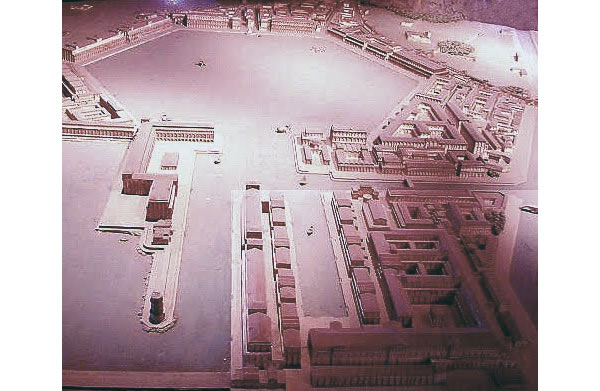Archaeologists Discover Why Romans Tore Down their own Imperial Palace
Portus was once a mighty port where 350 ships could dock at a time, supplying the Roman Empire with grain, wine, oil, slaves and luxurious goods from all around the world. The site also boasted an imperial palace decorated with rich frescoes and multi-coloured mosaics; it was one of the grandest palaces ever built by the Romans. Yet the palace and a huge warehouse were demolished virtually overnight, leaving no trace of the port's scale and wealth. Now a team of archaeologists from the University of Southampton believe they know why.
Construction of the sprawling nine acre imperial palace of Portus began in the 2 nd century AD and featured 60 rooms, a long colonnade with first floor courtyard and pool, an amphitheatre and an enormous 260-yard long warehouse, which experts believe was used to build and repair warships and merchant vessels. With 50 foot high walls, the huge complex would have required a mammoth effort to tear down. Yet only a few centuries after its construction archaeologists believe it was the Romans themselves who tore it town.
The dramatic new hypothesis has come from the University team in cooperation with the British School at Rome, who have claimed that this dramatic act of destruction was carried out to prevent the magnificent palace from falling into the hands of the barbarian tribes who were edging ever closer to the imperial capital as the empire began to crumble in the 5th century AD. The Romans decided they would rather see the palace smashed to pieces than have the Ostrogoths take possession of it.
By the 6th century AD, the Roman Empire had split in two, with the administrative heart transferred from Rome to Byzantium (Constantinople) and Rome itself menaced by marauding tribes. The Byzantines gained and lost control of Portus on various occasions during their struggles with the Ostrogoths. Eventually they realised that the imperial complex was a liability and an irresistible target for the Ostrogoths and other tribes.
“During our work of the last couple of years it has become very clear that everything changed around the middle of the 6th century and the imperial palace was deliberately demolished. It was a strategic hot spot close to Rome. After the Gothic wars, the Byzantines decided it was too much of a risk – they no longer wanted to be hostages to fortune,” said Simon Keay from Southampton University.
Now all that remains of the once grand palace are collapsed pillars, broken walls, fragments of colourful mosaics and the outline of the grand reception rooms. But remarkably, archaeologists believe they have only found 10% of what was originally there. Excavations are on-going to try to recover more of this once flourishing port and palace.



















